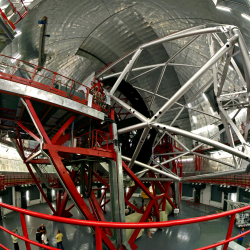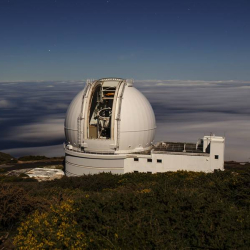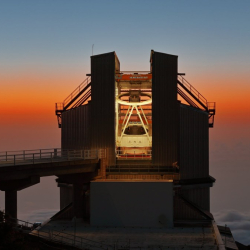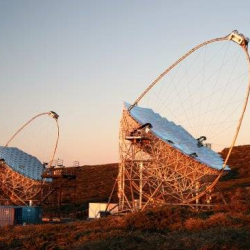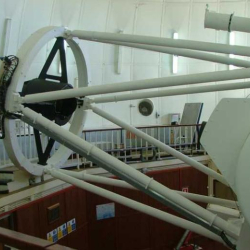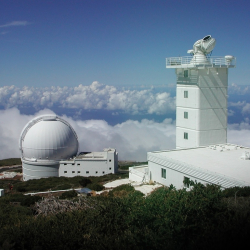Large Size Telescope
Santa Cruz de Tenerife
Spain
At Roque de los Muchachos Observatory (ORM), on the rim of the Taburiente National Park, at 2396 metres above sea level in the municipality of Garafía (La Palma) stands one of the largest arrays of telescopes in the world.
Descripción
The Large Size Telescope (LST) is part of the Cherenkov Telescope Array (CTA), an international project dedicated to detecting very high-energy gamma rays. Located at the Roque de los Muchachos Observatory in La Palma, Spain, the LST boasts a massive 23-meter diameter mirror, making it the largest of its kind within the project. Its ability to detect highly energetic particles allows it to study extreme cosmic phenomena such as supermassive black holes, supernova explosions, and gamma-ray bursts.
The LST captures Cherenkov radiation, which is produced when gamma rays interact with Earth's atmosphere. This radiation is essential for studying the origins of cosmic particles, providing insight into the most violent processes in the universe. Optimized to detect lower-energy gamma rays, the LST complements smaller telescopes in the CTA, which are more sensitive to higher-energy events.
A primary goal of the LST is to uncover mysteries of the universe, including the physical processes near black holes and the potential existence of dark matter-related particles. Its observations also help study the physics of active galactic nuclei, blazars, and other energetic astrophysical objects.
The Large Size Telescope is part of a coordinated network of telescopes working together to provide a comprehensive view of gamma-ray emissions across the universe. This international collaboration within the CTA represents a significant advancement in particle astrophysics, opening a new window to explore the extreme universe.
Datos técnicos del telescopio
- Optical System Type: Other
- Mount Type: Altazimuth Mount
- Mount Movement Type: Computerized Mount




